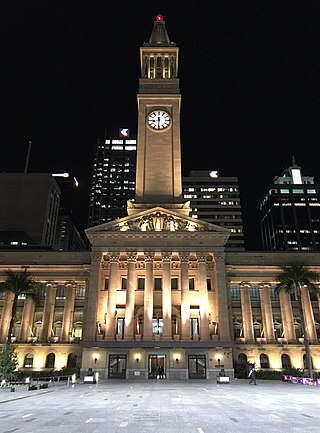
Brisbane City Hall, in Brisbane, Queensland, Australia, is the seat of the Brisbane City Council. It is located adjacent to King George Square, where the rectangular City Hall has its main entrance. The City Hall also has frontages and entrances in both Ann Street and Adelaide Street. The building design is based on a combination of the Roman Pantheon, and St Mark's Campanile in Venice and is considered one of Brisbane's finest buildings. It was listed on the Register of the National Estate in 1978 and on the Queensland Heritage Register in 1992. It is also iconic for its Westminster chimes which sound on the quarter-hour.

ANZAC Square is a heritage-listed town square and war memorial located between Ann Street and Adelaide Street, in Brisbane, Queensland, Australia. It is a state memorial to the men and women who participated in overseas armed service and is named in honour of the Australian and New Zealand Army Corps. ANZAC Square is adjacent to ANZAC Square Arcade.

Queens Gardens is a heritage-listed park located on a city block between George Street, Elizabeth Street and William Street in the Brisbane CBD, City of Brisbane, Queensland, Australia. It was built from c. 1905 to 1990s. It is also known as Executive Gardens and St Johns Church Reserve. It was added to the Queensland Heritage Register on 21 October 1992.
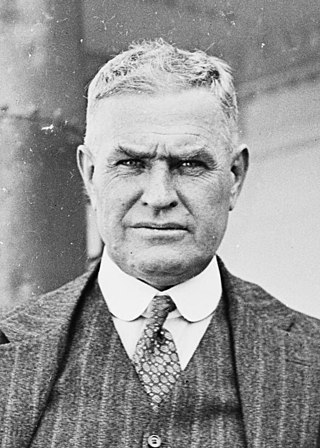
Major General Sir Thomas William Glasgow was a senior Australian Army officer and politician. Glasgow rose to prominence during the First World War as a brigade and later divisional commander on the Western Front. Post-war, he was elected to the Australian Senate, representing Queensland as a Nationalist Party member from 1919 to 1931, before appointment as Australian High Commissioner to Canada. In 1945, Glasgow returned to Australia and resumed his private business interests. He died in Brisbane in 1955, at the age of 79.

The Sydney Cenotaph is a heritage-listed monument located in Martin Place, in Sydney, New South Wales, Australia. It was designed by Bertram Mackennal and built from 1927 to 1929 by Dorman Long & Co. It is also known as Martin Place Memorial and The Cenotaph. It is one of the oldest World War I monuments in central Sydney. It was added to the New South Wales State Heritage Register on 11 November 2009.
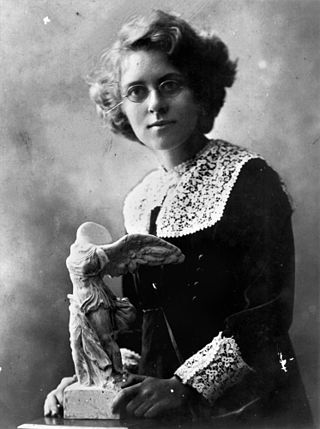
Lilian Daphne Mayo was an Australian artist, most prominently known for her work in sculpture, particularly the tympanum of Brisbane City Hall and the Women's War Memorial in ANZAC Square.

William Leslie Bowles, commonly referred to as Leslie Bowles or W. Leslie Bowles, was an Australian sculptor and medallist.

Boer War Memorial is a heritage-listed war memorial at Crescent Street, Gatton, Queensland, Australia. It was designed by William Hodgen and produced by Toowoomba mason William Bruce. It was built in 1908, and was unveiled on 3 August by Governor of Queensland, Lord Chelmsford. The memorial honours four local men who died in or as a result of the Boer War, and is one of only three known Boer War memorials in Queensland. It is also known as the Fallen Soldiers Memorial and the South African War Memorial.

Beaudesert War Memorial is a heritage-listed memorial at William Street, Beaudesert, Queensland, Australia. It was built from 1919 to 1921. It was added to the Queensland Heritage Register on 21 October 1992.
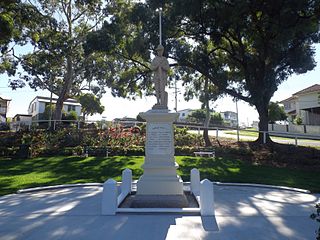
Manly War Memorial is a heritage-listed memorial at 184 Carlton Terrace, Manly, City of Brisbane, Queensland, Australia. It was built from 1920 to 1921. It is also known as Ferguson Street Reserve, Manly Dam, and Soldiers Memorial Park. It was added to the Queensland Heritage Register on 21 August 1992.

Oxley War Memorial is a heritage-listed memorial at 1218 Oxley Road, Oxley, Queensland, Australia. It was built in 1920. It is also known as Oxley Memorial Park and Oxley Place. It was added to the Queensland Heritage Register on 4 July 2006.

Gair Park is a heritage-listed park and memorial at 181 Annerley Road, Dutton Park, City of Brisbane, Queensland, Australia. It was built from 1936 onwards. It was added to the Queensland Heritage Register on 5 April 2004.
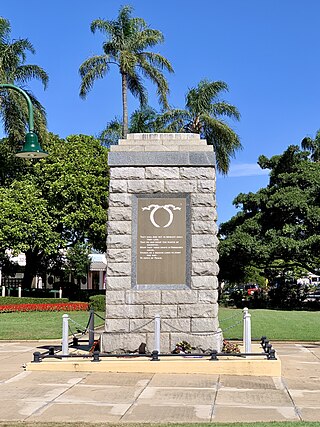
Sandgate War Memorial Park is a heritage-listed memorial at 8 Seymour Street, Sandgate, City of Brisbane, Queensland, Australia. It was designed by George Gray Prentice and built from 1923 to 1924 by Lowther & Sons. It was added to the Queensland Heritage Register on 3 October 2005.

South African War Memorial is a heritage-listed memorial at ANZAC Square, 228 Adelaide Street, Brisbane City, City of Brisbane, Queensland, Australia. It was sculpted by James Laurence Watts from 1912 to 1919. It is also known as Boer War Memorial and The Scout. It was added to the Queensland Heritage Register on 21 October 1992.

Booval War Memorial is a heritage-listed memorial at Green Street, Booval, City of Ipswich, Queensland, Australia. It was built in 1919. It was added to the Queensland Heritage Register on 21 October 1992.

The Boer War Memorial is a heritage-listed memorial at Warwick Street, Allora, Southern Downs Region, Queensland, Australia. It was built from 1904 to 1940s. It is also known as Queen's Park and War Memorial Park. It was added to the Queensland Heritage Register on 21 October 1992.

Gympie and Widgee War Memorial Gates is a heritage-listed memorial at Mary Street, Gympie, Gympie Region, Queensland, Australia. The gates provide an entranceway on Mary Street through to the Gympie Memorial Park in Reef Street. The gates were designed by George Rae and built in 1920 by A L Petrie & Son. It was added to the Queensland Heritage Register on 21 October 1992.

Pialba Memorial Cenotaph is a heritage-listed memorial at Freedom Park, Main Street, Pialba, Fraser Coast Region, Queensland, Australia. It was designed by Philip Oliver Ellard Hawkes and built from 1918 to 1921 by Frederick William Webb. It was added to the Queensland Heritage Register on 6 May 2016. It is also known as the Pialba War Memorial and the Hervey Bay War Memorial.



















